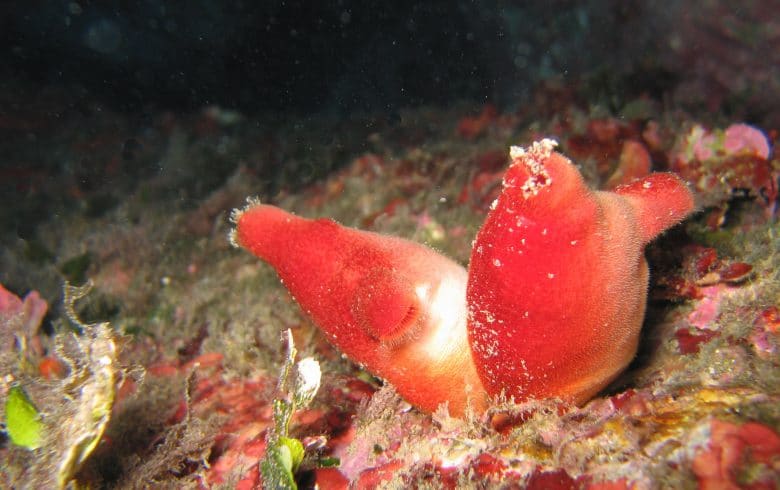
The red sea squirt is a solitary animal no more than 10cm high and coral-red on one side and lighter on the other. It is cylindrical and shaped like a wineskin bag with two siphons with cruciform edges with a frill of protective “hairs”. The animal feeds on plankton-rich water that it sucks in through the upper siphon, filters in the pharynx then blows out through the side siphon. The tunic is grainy and rigid and made of tunicin, a substance similar to cellulose. It lives away from bright light on rocky bottoms and among the rhizomes of Posidonia seagrass. It is found down to depths 100m in the Mediterranean and in the Atlantic from Gibraltar to Mauritania.
Phylum: Tunicata
Class: Ascidiacea
Order: Stolidobranchia
Family: Pyuridae
Scientific name: Halocynthia papillosa
French: Ascidie rouge
Spanish: Pero de mar
Italian: Patata di mare
German: Rote Seescheide






















